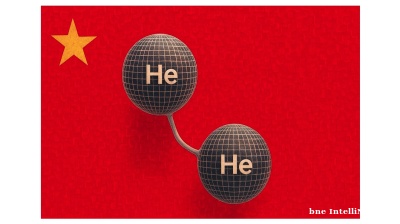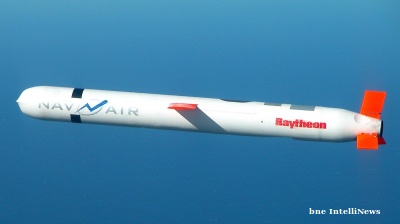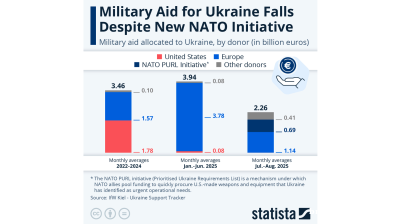Russian Prime Minister Mikhail Mishustin is due to review the text of a “National Project for Electronics” on Friday. The national projects are the Kremlin’s flagship policies built around 12 priority sectors in which the government will invest heavily. Labour productivity, small business and Russia’s widening demographic gap all have dedicated national projects.
Re-launched in 2021, the national projects programme is intended to remedy Russia’s biggest problems and return it to the level of prosperity which it enjoyed in Putin’s first term. The addition of technology to this list is a sign that Russia is now confronted with a new existential threat: sanctions.
Tech wars
Following the invasion of Ukraine on February 24, the West imposed targeted sanctions on Russian industries, designed to “degrade Russia’s technological base and industrial capacity”, according to Ursula von der Leyen. Unsurprisingly, one sector which is feeling the strain particularly acutely is technology. Russia’s tech industry has thrived in recent years as closer economic ties with the West and China have provided the country’s swelling pool of talent with a steady flow of components and expertise. Russia’s IT market grew by 7% to a total $25bn in 2019 alone.
Now Russian tech is suffering from the impact of western bans on the export of high-tech components, including quantum computers and advanced semiconductors. Japan, Europe and the US are all joining the sanctions, which are exacerbated by self-sanctioning and public pressure on western tech companies.
Russian Central Bank (CBR) Governor Elvira Nabiullina said on Monday, 18 April that Russian producers may have to switch to “previous generation products", echoing the warning of World Bank economists that a divide is emerging between between emerging markets, where old tech dominates, and developed markets, which will have access to the latest technology.
Russia imports $19bn of high-tech goods annually. According to Brussels-based think-tank Bruegel, the largest share of those imports (45%) come from the EU, with another 21% coming from the US. Putin has admitted that the sanctions are economically painful for Russia, but has singled out export logistics and hydrocarbon sanctions as the most damaging.
In fact, the de-coupling of Russia from its technology supply chains is likely to have an equally devastating long-term impact, depriving Russia of its cherished future as a high-tech modern economy.
Russia has drawn on its highly tech-literate population to become a major technology player in recent years, producing homegrown giants like antivirus maker Kaspersky Lab and Yandex, a search engine and provider of machine learning services.
In addition to its supply chain and sourcing woes, Russia’s IT industry now has a brain drain to reckon with as it haemorrhages tech talent to Turkey and Central Asia. Highly-trained IT specialists are fleeing in their tens of thousands as fears of repression at home mount and the prospects for Russia’s tech industry dwindle.
Import substitution
As a result of the sanctions, Russian spending on IT was forecasted to drop by 39% this year, according to International Data Corporation (IDC). Meanwhile, experts estimate that Russian manufacturers who had previously depended on foreign companies like Advanced Micro Devices Inc. and Intel Corp. to provide components now only have enough stock to last them around eight months.
The Russian government’s solution to these problems is to ramp up domestic production and turn to Chinese components.
The first step is one of massive investment in Russia’s technology sector. It is unclear if Russia’s National Project for Electronics will be a separate national project, or if it will simply be appended to the budget of another, similar project, such as the digital economy project or science project.
What is clear, however, is that the electronics project could cost up to $40bn, according to Kommersant.
That money will go mostly towards big subsidies for manufacturers and the construction of new design centres, projected to bring the total number of Russian design centres from 70 to 300. Lawmakers hope that these investments will allow 30% of Russian households to transfer to domestically produced electronics by 2030.
The Russian government, meanwhile, hopes that 100% of the technology it purchases will be home grown by 2030.
In order to achieve this, foreign tech production owned by Russian companies will need to re-locate to Russia or China as early as this year. The hope is that this will cover 100% of Russia’s import substitution needs for critical tech by 2024. Critics say that this goal is unrealistic.
Give and tech
Even if these plans were to succeed, which remains doubtful, Russian investment on technology would still not be a scratch on that of its neighbour China. The Russian government estimates that China invests around $280bn per year in its domestic tech industry, compared to Russia’s $1.1bn.
It is clear, therefore, that Russia will depend to some degree on China’s more advanced tech sector to provide it with the latest components and products.
As well as dramatically increasing the number of Russian design centres, onshoring supply chains, and developing a portfolio of homegrown tech products, the Kremlin plans to begin serial production of processors which can match those used by the iPhone 5S. But with iPhones no longer being sold in Russia due to sanctions, processors on a par with those made by Apple in 2013 are unlikely to cut the mustard with Russian consumers.
Chinese components are more advanced. The rising star in the tech world is particularly gifted in emerging spheres like quantum computing as well as certain types of critical hardware like drones. China also boasts three of the top five smartphone brands by sales rankings, according to IDC Quarterly Mobile Phone Tracker.
When it comes to software and semiconductors, however, China still lags behind the rest of the world’s offering. Taiwan is responsible for 20% of semiconductor manufacturing capacity, compared to China’s 16%. Taiwan also produces 92% of the most sophisticated chips, with transistors smaller than 10 nanometres, according to the Semiconductor Industry Association.
For the most part, China only manufactures third-tier semiconductors. Given the centrality of this component to a lot of high-tech products, it is doubtful that Chinese parts will be able to fully bridge the tech hardware gap left by the exit of western companies.
Rather than manufacturing high-end domestic products using Chinese components, it is more likely that Russia will start importing Chinese tech products wholesale and simply substitute iPhones for Xiaomis, for example. It remains to be seen how Russian consumers will feel about this. Russians are used to finding a way around obstacles when it comes to tech – installing VPNs to access censored news, or migrating en-masse from one social media platform to another when government interventions create privacy scares. This time, it seems it won’t be so easy to find a simple fix.
Tech
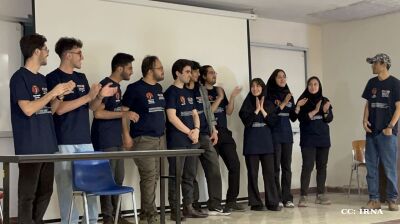
Iranian startup targets computer science skills gap with project-based learning model
Iranian startup CS12 introduces project-based computer science education for 13-15 year-olds to bridge university-job market gap and reduce brain drain, expanding from Tehran to Arak, Sari and Shiraz.
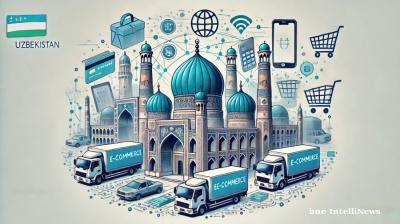
Uzbekistan’s unicorn ecommerce startup Uzum adds London to list of potential IPO locations
Co-founder says he's against a fast geographical expansion. Wants to win and dominate home market to demonstrate to partners fintech is capable of outperforming on other markets.
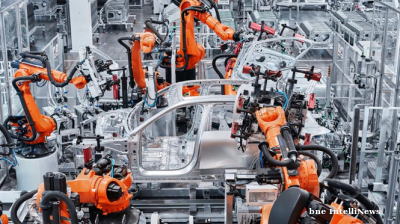
China increasing its lead in robot technology use
China is consolidating its dominance in the global industrial robotics market, accounting for 41% of the world’s operational robot stock and more than half of all new installations in 2024, according to the International Federation of Robots.
_(1).jpg)
OpenAI to invest up to $25bn in Argentina under Milei incentive scheme
Artificial intelligence giant OpenAI and energy company Sur Energy have signed a letter of intent to develop a data centre hub in Argentina requiring investment of up to $25bn.
